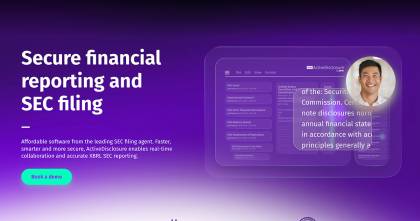Becoming a publicly traded company with shares available on public markets takes several steps. In many cases, businesses will need to file SEC Form 10-12G before they take action to sell securities, per the Securities Act of 1933. Form 10-12G serves as an initial registration statement of the company’s private securities, turning it into a public reporting company.
With an understanding of the applications, requirements, and expectations for the filing, businesses can make educated decisions about how best to comply with Securities Act rules and all other SEC rules.
What Is SEC Form 10-12G?
The SEC creates paths for businesses to register as a public reporting company. Many companies with significant assets and shares look for ways to go public, such as a Regulation A offering or IPO (initial public offering). SEC Form 10-12G can be the start of one path. This form allows businesses to register securities with the SEC, without taking the extra step of creating public shares for trading. Companies can voluntarily decide that they want to file this form as they expand, or they may be required to file it once they reach certain thresholds.
It’s important to note that becoming a publicly traded or public reporting company is different than an IPO, although reaching that status is an important component of a successful IPO. Since the information contained in Form 10-12G is published publicly, potential investors can use the data provided to determine whether they want to invest in the company, should shares become available for sale at a later time.
Who Needs to File Form 10-12G?
Per Section 12g of the Securities Exchange Act of 1934, there are a few triggering actions that would require companies to file Form 10-12G. Generally, businesses must file within a certain period after they reach $10 million in assets and shares held by 2,000 people (or 500 who are not accredited investors).
These guidelines are most likely to apply to American startups and private companies engaging in significant growth or fundraising, in advance of becoming a publicly traded company. Since the thresholds do not specify a number of employees to trigger required filing, special purpose acquisition companies (SPACs) or shell companies also use the form at times. Foreign private issuers typically use SEC Form 20-F to register securities.
10-12G Reporting Requirements
Like many SEC filings, SEC Form 10-12G requires comprehensive disclosures from the company, per Regulation S-K and Regulation S-X. Details include:
- Ownership information
- Board governance
- Executive compensation
- Management’s Discussion and Analysis of risk factors and overall financial condition
- List of capital stock, including number of shares and their value
- Audited financial statements by a PCAOB-registered firm
- Legal proceedings
- Changes to accounting procedures and accountants
Although this form is published regardless of the SEC’s commentary, it serves as a significant step toward an IPO or other public trading opportunity. Companies are usually required to provide detailed disclosures on a regular basis, so the initial preparation for Form 10-12G can help streamline future filings.
10-12G Filing Compliance and Timeline
Companies must file SEC Form 10-12G within 120 days of the end of the fiscal year in which they reach the asset and shareholder thresholds. Businesses can submit the filing using the SEC’s electronic system, called EDGAR Next. As draft registration statements, the SEC typically reviews these filings and provides commentary within 30 to 60 days. They do not immediately publish the content, as they would for filings that trigger Rule 462b. Companies are not required to address these comments as they might for other filings. Once the 60 days have passed, the SEC will publish the filing unless the company withdraws it.
Although filing Form 10-12G does not present the kinds of obstacles that companies may face with other forms on their SEC filing calendar, it can still come with challenges. Businesses may fail to provide complete or accurate financials, triggering extensive commentary from the SEC. The SEC usually publishes comments publicly, although they may redact certain information. Investing the time to define the governance structure, internal controls, and financial records can reduce the likelihood of incomplete paperwork or late submissions.
What Happens After Filing Form 10-12G?
Once a business successfully files Form 10-12G, it becomes a company with certain obligations to the SEC. Specifically, these companies must now meet SEC rules for reporting, disclosures, and governance. Businesses likely need to file Form 10-K, Form 10-Q, and Form 8-K. Once they go public, they will have additional filing requirements, such as Form N-2.
Filing Form 10-12G triggers requirements for filing forms that publicly traded companies would also have to file, but it does not make the company publicly traded or create shares for sale. Those options require additional actions, such as the filing of Form S-1. Common next steps might include requesting eligibility to deposit with the Depository Trust Company, listing securities on the over-the-counter market, or listing with a national exchange.
Related Forms and Support
Compliance with SEC guidelines requires preparation and an understanding of the requirements of the official SEC Form 10. Since the initial disclosures for this filing can be significant and time-consuming, compliance software helps simplify the process. DFIN’s technology platforms can streamline data management and collaboration for various filings, including:
- Form 10: Registration of securities
- Form S-1: Registration for initial public offering
- 10-K: Annual reporting of the company’s financial information and condition
- 8-K: Filing of unusual events, like a shareholder vote or executive change
- 15-12G: Termination of registration
DFIN provides expert support for the full lifecycle of 10-12G filings, from the initial preparation to the handling of SEC comments. Our expert assistance with XBRL tagging, EDGAR formatting, and SEC comment responses can help companies get ready to transition from private to public with confidence. To learn more, request a demo today.

